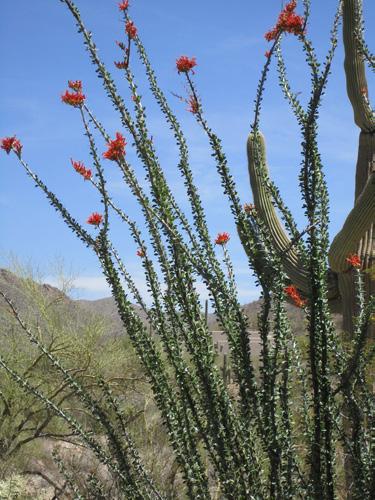Landscaping Picking Plants for Small Spaces With many people spending larger amounts of time at home this year, now is a great time to replant your flower beds, pots, and plants on your patio or other outdoor areas. But that’s not as easy as simply going to the nursery and picking out plants based on their appearance. In Grayhawk, DLC Resources puts a lot of thought into selecting any new plants. They always have to fit our “Right Plant, Right Space” motto. That means that we carefully consider several factors before choosing new plants: how much sun or shade the area receives, the amount of space they’ll have to grow, and moisture needs. We also take plant appearance and the overall look we want to achieve into consideration. You can take a similar approach to choosing plants for your small outdoor spaces. With a bit of planning and a few considerations, your patio or side-yard will not only look great, your plants will also be healthy. Make sure you consult Grayhawk’s Approved Plant List before choosing your new additions.
SUN EXPOSURE As always, one of the very first things to consider whenever you’re selecting any new plant is the amount of sunlight the area will get. Being so close to tall buildings and fences, your yard and patio can fluctuate drastically between full sun and full shade throughout the day. Make sure you understand how the sun moves through your space throughout the day. Keep in mind that sun exposure may not be consistent throughout your small space either. Walls, overhangs , and roofs can create vast differences between one side of your patio, side-yard, or backyard and the other.
WATER CONSIDERATIONS As always, choose plants that are desert-adapted or native. Not only will they do better in our desert climate, they’ll also help keep your water bills down. But that’s not the only water-related factor to take into consideration. Infrastructure in small spaces can create micro-environments. Be aware of how rainwater moves throughout your small space:
What kind of drainage do your raised beds or planter pots have? Does water tend to pool in one corner of your yard after heavy rains? Does a particular flowerbed get inundated with rainwater dripping from your house’s eves?
POOL PLANTS Aside from the above considerations, plants around pools need to fit one more criteria: how much litter do they create? You generally don’t want to put a Mesquite or Palo Verde tree overhanging your pool — unless you really like the idea of fishing bean pods or flower petals out of the water. Take the time to research how much litter — whether it’s falling leaves in the autumn, bean pods or spring flowers — your poolside plants will create. Also, keep in mind what activities you’ll be doing around the pool. Cacti with very prickly spikes — like the Prickly Pear and Golden Barrel — may not be the best choice for pool areas where bare feet or inflatable pool toys are common.
COURTYARDS Courtyards are especially tricky when it comes to lighting. Because they’re enclosed on all four sides, some areas may never get direct sunlight while other courtyard areas have to deal with very intense sunlight for a few hours each day. Before you choose
18
| Flight






